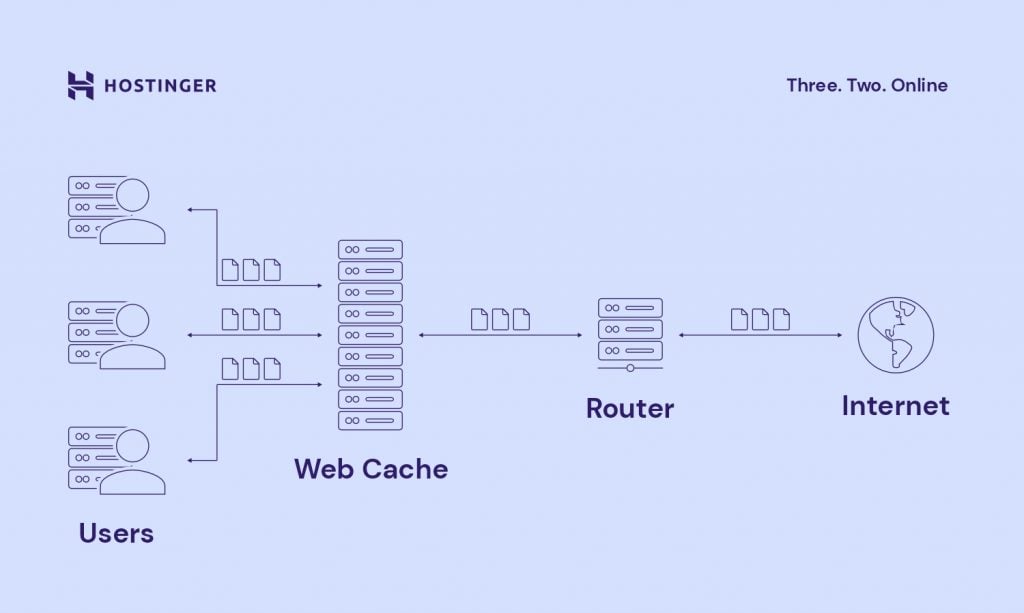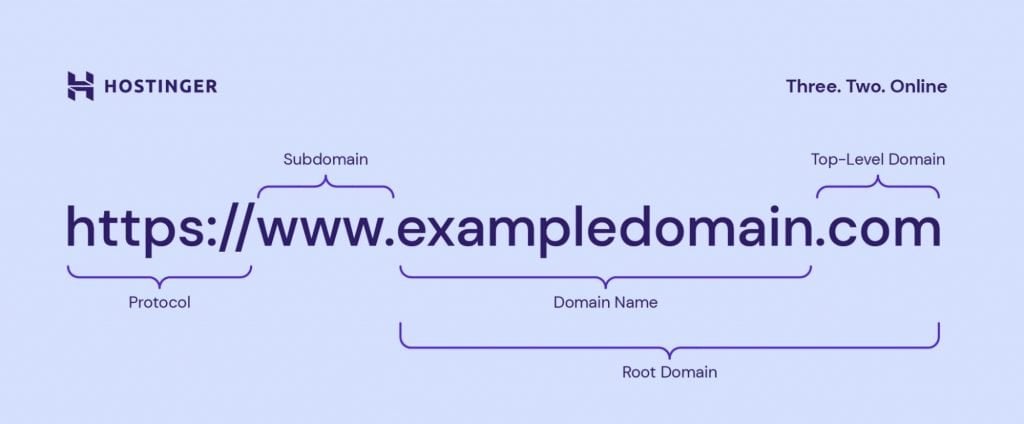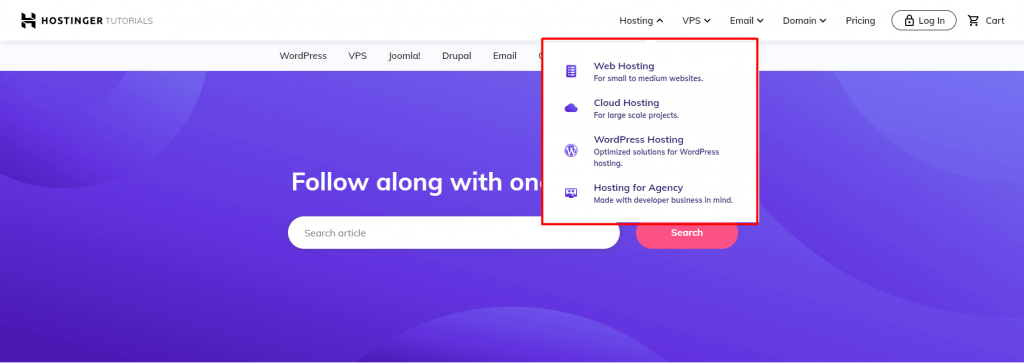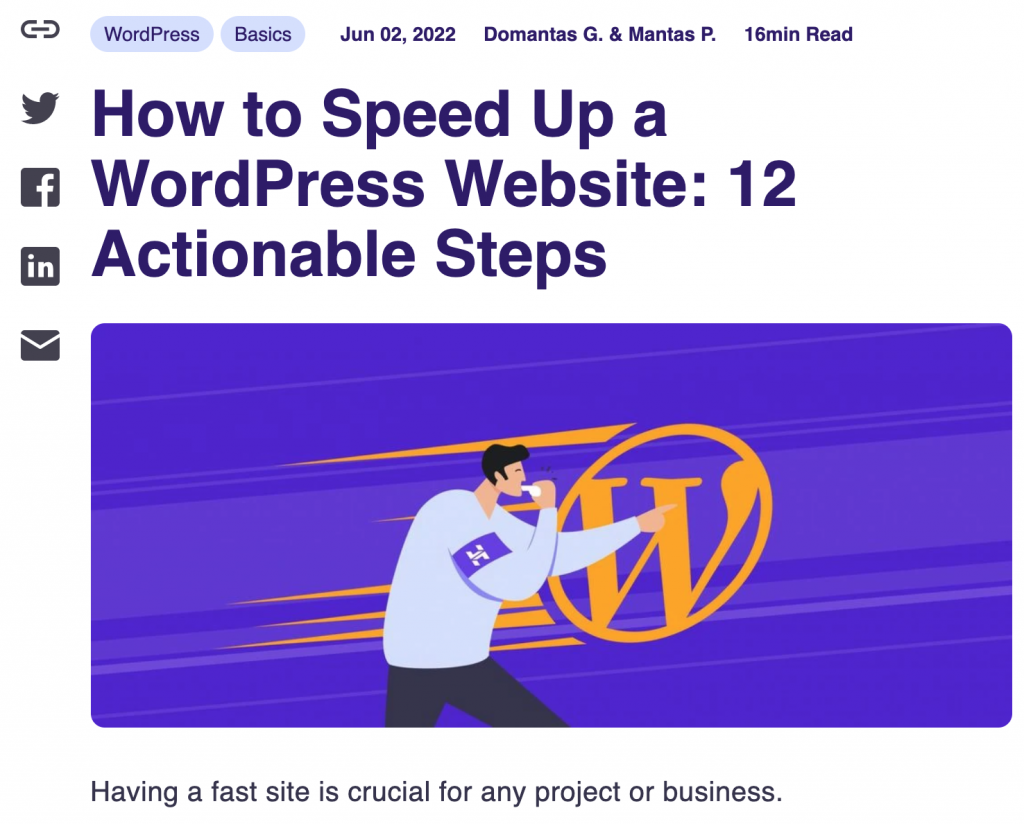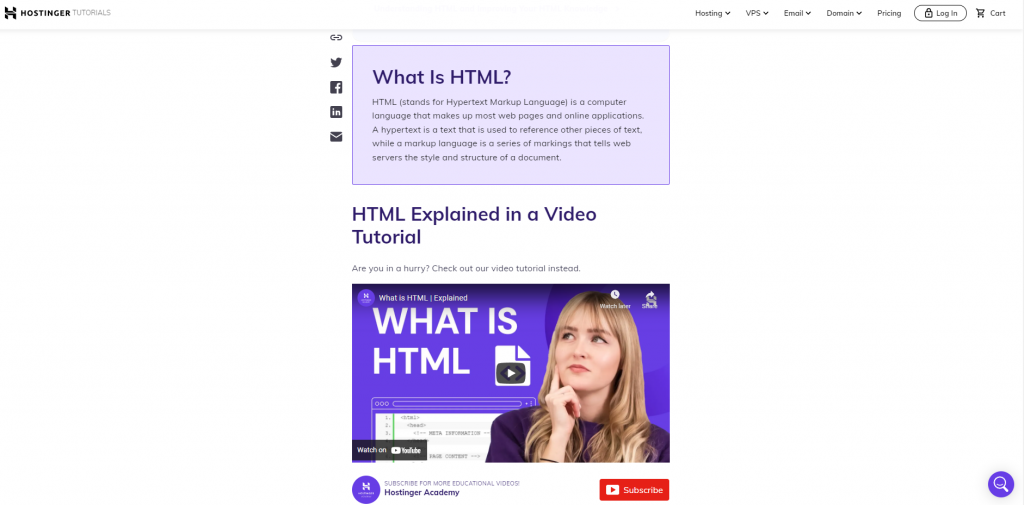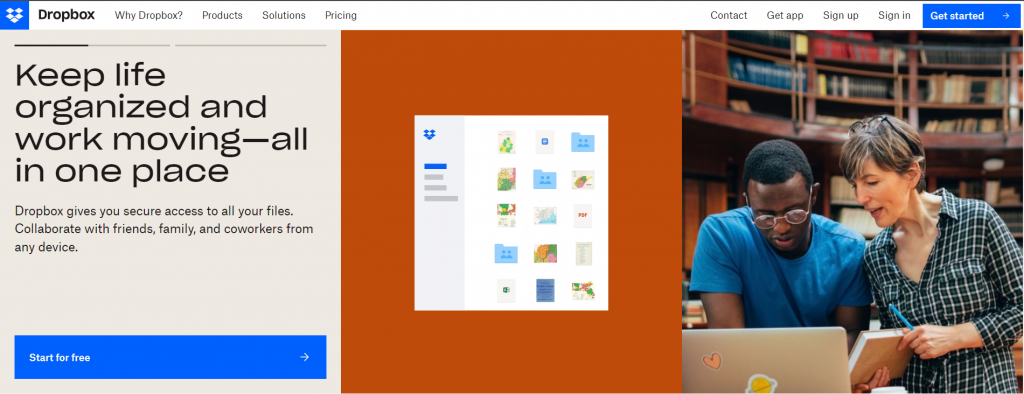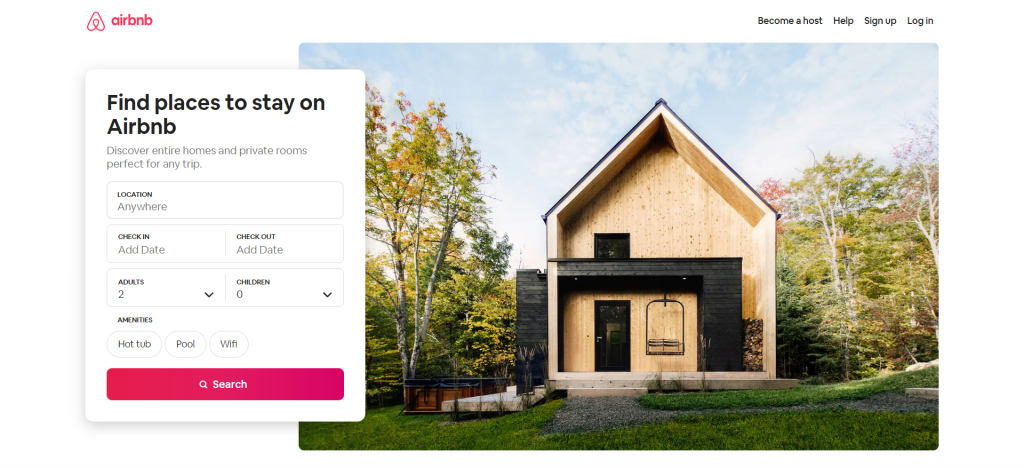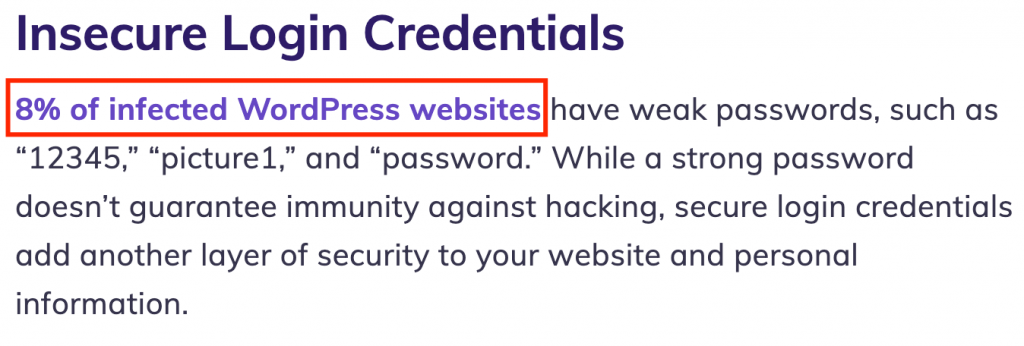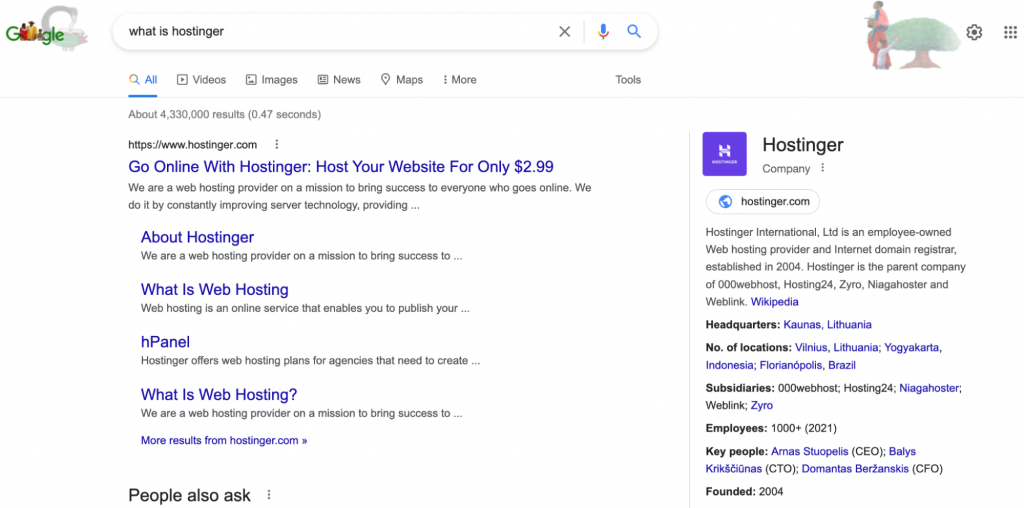Website Terminology: 160+ Web Jargons Explained (Tech, Design, Hosting, and More)

Whether you’re trying to build a personal website or considering a career as a web developer, you’ll likely encounter a lot of web-related jargon. Being familiar with website terminology is essential to ensure that your web development projects stay on the right track.
Moreover, it allows you to communicate better with web designers and other developers, contributing to cost savings and better decision-making.
This article provides an A-Z glossary of terms related to web development, web design, marketing, and hosting, helping you learn and review important concepts.
Download Glossary For Web Beginners
Website Terminology
A
A/B Testing
Also known as split or bucket testing, A/B testing is the process of comparing two or more variants to determine which one performs better. By conducting an A/B test, you can fine-tune a website and enhance its UX.
Add-on
An add-on is a software extension or script that extends the functionality of a program.
Ajax
Ajax is a JavaScript and XML-based set of techniques that enables web applications to work asynchronously. Using Ajax, it’s possible to send and receive data from the server without reloading the entire page.
Angular
Angular is an open-source software development framework developed by Google. It uses Typescript and HTML to develop dynamic and interactive single-page web applications.
API
An API (Application Programming Interface) facilitates the interaction between two or more software applications. API-standardized protocols, such as Rest API, can provide web developers with an efficient and secure way to transfer data.
B
Back-End Development
A part of web development that focuses on the server-side of the website. The back-end activity isn’t visible to users but has a significant impact on the site’s performance and usability.
Backups
Backups are copies of your files, databases, or information that are stored in a separate location from the original one. The purpose of having backups is to avoid data loss if there’s an issue on the site.
Blog
A blog is a web log, an online journal where entries are displayed in reverse chronological order. Blogs can be standalone sites or part of a larger website, and the people who own and maintain them are called bloggers.
Bootstrap
Bootstrap is a free and open-source front-end framework designed to simplify the development of responsive, mobile-friendly websites. It includes a library of HTML and CSS-based design templates that allow users to speed up the website creation process.
Breadcrumbs
Breadcrumbs are navigational links that give an overview of the site’s information hierarchy. By implementing breadcrumbs, you will improve the website structure and user experience.
Browser
A software program that translates HyperText Markup Language (HTML) code into readable web content using the Hypertext Transfer Protocol (HTTP). Some popular web browsers include Google Chrome, Microsoft Edge, and Safari.
C
Cache
Browsers use cache to store files, codes, and other content in order to avoid downloading them each time users access the same site. Cleaning your browser cache regularly will resolve loading issues and avoid overusing your disk space.
Cascading Style Sheets (CSS)
CSS is a style sheet language used to define how HTML documents are displayed to end-users. With CSS, users can modify the visual appearance of a website, including its font, color, and background.
Cookies
Cookies are a set of data that help websites keep track and save users’ information or activity, like login details or preferred site settings.
Client-side
A web terminology that describes any elements of a website or web application displayed or performed by the user’s devices. Client-side development involves designing a website’s layout and user interface (UI).
Content Management System (CMS)
A content management system (CMS) is a software application that comes with a graphical user interface for creating and managing websites. Some popular CMSs include WordPress, Drupal, and Joomla.
Customization
Customization is the process of modifying products or services to better meet the users’ preferences and needs. For instance, WordPress provides users with tools to customize their site’s theme, menu, and font.
D
Deprecated
Refers to programming features, like software, hardware, or stacks, that are scheduled to shut down or be replaced by new versions. Users are encouraged to switch deprecated items with other updated options.
Document Type Definition (DTD)
A set of rules that defines and validates the structure of XML files. Applications use DTD to verify the validity of XML data.
Doctype
A document type declaration (doctype) is an instruction that informs web browsers what version of HTML is used on a web document.
DOM
The Document Object Model (DOM) is a programming interface for XML and HTML documents that treats each element on a document as an object. It allows developers and programs to read, access, and update the document’s content.
Drag and Drop
Drag and drop refers to moving elements on an interface by dragging them from one location and dropping them in another.
Drupal
Drupal is a powerful content management system (CMS) that offers extensive modules and flexible customization for building all kinds of websites.
E
eCommerce
eCommerce stands for electronic commerce, and it refers to any transaction made online. When people talk about eCommerce, they usually associate it with online shopping.
Email Service Provider (ESP)
Companies or platforms that provide email marketing services or tools for creating and launching email campaigns. Using an ESP offers several advantages, such as ensuring email deliverability, personalizing email content, and automating subscriber listing.
F
File Transfer Protocol (FTP)
File Transfer Protocol (FTP) is used to communicate and transfer files between computers on a network. Using FTP, users can modify websites and transfer files to a server.
Footer
Footer is the information or content displayed at the bottom section of a web page. Usually, it provides easy access to important pages such as the privacy policy and disclaimers.
Front-End Development
Front-end development is the process of developing the visual output of a website, from its layout to navigation.
G
Gatsby
Gatsby is an open-source static site generator that combines the functionality of modern tech stacks like React.JS, GraphQL, and webpack.
Geolocation
It is the practice of using the Global Positioning System (GPS) or IP addresses to track the location of users and their devices.
Git
The global information tracker (GIT) is a distributed version control system (VCS) that tracks changes to any set of files. It’s primarily used to coordinate collaborative software and development projects.
GitHub
GitHub is a cloud-based Git hosting service with a web-based graphical interface. It enables developers to collaborate on shared projects while maintaining a detailed record of their progress.
H
.htaccess
Hypertext access or .htaccess is a configuration file used to enable and disable features of Apache-hosted websites. With it, users can make various configuration changes, from setting up URL redirects to changing the website’s time zone.
HTTP Headers
HTTP headers are data that provide additional information about HTTP requests and responses.
Headless Website
It’s a website architecture solution that separates the back-end content repository (“body”) from the front-end presentation layer (“head”), so users can modify one without interfering with the other.
Homepage
A homepage is the default page of a site – usually the first page a website visitor sees. Multilingual websites, for example, often have multiple language-specific homepages.
Hotlinking
Hotlinking is the process of directly linking media files hosted on third-party sources. It’s recommended to avoid hotlinking to avoid unethical practices and legal repercussions.
HyperText Markup Language (HTML)
HyperText Markup Language (HTML) is a computer language for creating web pages and online applications using elements, tags, and attributes.
I
Information Architecture (IA)
This web terminology refers to the blueprint of websites and applications. These are made so that the end product’s functionality can adapt to the user’s needs.
J
JavaScript (JS)
JavaScript is a popular lightweight programming language that lets developers implement interactive elements on web pages, applications, or games.
Joomla
Joomla is a free, open-source CMS platform for creating and managing various kinds of websites. It supports extensive features that allow users to enhance the site’s functionality without installing third-party plugins.
jQuery
jQuery is a cross-platform and open-source JavaScript library designed to streamline the coding process. With jQuery, users can write less code while still obtaining the same results.
JSON
JSON stands for JavaScript Object Notation, and it’s a file format that uses human-readable text for data interchange.
L
Landing Page
Landing pages are special web pages designed to generate conversions by focusing on a specific call-to-action. A landing page can be a standalone web page that links to your main site or a part of it.
Laravel
Laravel is one of the best PHP frameworks for developing modern and complex applications. It’s well-known for its expressive code syntax and extensive built-in functions.
M
Magento
Magento is a flexible CMS built on PHP. It provides a robust set of plugins and website themes that allow entrepreneurs to build reliable online stores.
Metadata
Metadata is a data set containing information about other data, which makes searching and processing data easier and faster. In SEO, meta tags like titles and descriptions help search engines and readers better understand a page’s content.
O
Open-Source
In software development, the term refers to a software or IT-related project with publicly accessible code that can be altered or enhanced by anyone.
P
Pageview
It refers to each time a browser loads or reloads one web page.
Pagination
A method of dividing website content into separate web pages. Adding pagination can enhance a website’s user experience and performance.
Permalink
Short for permanent link, a permalink is the URL of a web page or blog post that is intended to remain unchanged. It’s typically written in a simple and readable format, making it easier for visitors to understand it.
Plugin
In WordPress, a plugin is a software extension that increases the functionality of a website.
Prestashop
PrestaShop is a free, open-source eCommerce site builder that allows users to develop and manage their online stores easily. There are currently 294,000+ live websites running on PrestaShop, making it the 7th most popular open-source platform.
Privacy
It refers to an individual’s level of control over their personal information while connected to the internet.
Proxy
A server that allows users to hide their public IP addresses. It provides better security and privacy protection than connecting directly to the internet.
Q
Query
A query is a request for information. When talking about database queries, it refers to information retrieved from a database.
R
React
React is an open-source JavaScript library developed and maintained by Meta. It contains a collection of reusable JavaScript components used for building user interfaces (UI).
reCAPTCHA
reCAPTCHA is an updated version of the traditional CAPTCHA system. It’s a test that distinguishes human users from bots to prevent websites from getting spammed and abused.
Really Simple Syndication (RSS) Feed
Formerly known as RDF site summary, it refers to web feeds that notify users about the latest updates from a website. An RSS feed is often written in a computer-readable format to enable the automatic transmission of website content.
S
Schema
A schema is a layout or structure that serves as a basis for programmers when constructing a database. Users can use it to understand and find information within a database.
Screen Resolution
It refers to the pixel density relative to the visual dimensions (height and width) of your computer screen. It’s an important element to consider, especially when working in the web design industry.
Sidebar
An additional piece of information resided on the left or right side of the main website content.
Sitemap
A sitemap is a website’s blueprint created using XML to store relevant web page information in an organized and hierarchical order, helping search bots to index the site.
T
Tags
Tags are essentially keywords that refer to a file’s or document’s details. Applying tags to your blog makes it easier for visitors to find related content.
Tooltip
Tooltips are UI components containing brief instructions that appear when users hover over an element on websites or apps.
U
Uniform Resource Locator (URL)
A Uniform Resource Locator or URL is a web address used to specify the location of web resources. It consists of elements such as protocols, subdomains, domain names, and domain extensions.
User Acceptance Testing (UAT)
An evaluation process that verifies whether the software meets the needs of clients and end-users. Implementing UAT can help save time and money while increasing customer satisfaction.
V
Virtual Private Network (VPN)
A VPN or Virtual Private Network is a type of network that encrypts your internet connection and masks your IP address on a public network. Using a VPN connection enhances security and can also be a great way to bypass content restrictions.
W
Web Page
It’s an HTML document displayed in a web browser. Websites are formed by a group of web pages gathered under one domain name.
Website Analytics
A process of researching and analyzing website data related to users’ behavior to improve its performance. This data usually includes four key metrics – total traffic, source of traffic, bounce rate, and conversion rate. Google Analytics is a popular tool for tracking website traffic.
Website Builder
A website builder is a software or platform that enables users to construct websites without having to manually code them.
Website Migration
Any significant changes to a website’s configuration that may have an impact on SEO. For instance, changes in domain name, URL, hosting plan, or layout design.
What You See Is What You Get (WYSIWYG)
This term describes content editors, such as website builders, that let users directly edit and update content in an interface that simulates the end result.
White Screen of Death
A typical website or application issue in which the user’s screen suddenly turns blank. In WordPress, fixing a white screen of death can be more complicated since it doesn’t show any error messages.
WebP
WebP is a Google-made image format that combines lossy and lossless image compression methods to produce high-quality images with small file sizes.
Whitespace
Whitespace (negative space) is a term used to describe the empty area between or within web design elements. It helps create a visual hierarchy of your website by emphasizing important elements.
WordPress
WordPress is a free and highly-flexible CMS for website creation. At the technical level, it’s a PHP-based program that runs on MySQL or MariaDB databases.
WordPress Auto-Update
WordPress auto-update is a feature that enables automatic updates for WordPress core, plugins, themes, and translation files.
WordPress Database
A WordPress database is storage that uses a MySQL open-source database management system to save and manage your WordPress website data.
WordPress Hooks
WordPress hooks are functions applied to both WordPress actions and filters to modify the functionality of a WordPress plugin or theme.
WordPress Multisite
WordPress multisite is a WordPress built-in feature that lets users run multiple sites from a single dashboard.
WordPress Pingback
A pingback is an automated WordPress notification that lets site owners know when someone links to their site. To receive it, enable the pingback feature in the WordPress settings.
WordPress Private Page
WordPress private pages and posts can only be accessed by specific users.
WordPress Sidebar
A WordPress sidebar is a widget area on WordPress sites that displays extra information alongside the main content.
WordPress Slug
A WordPress slug is a part of a WordPress site’s URL that comes after the domain name. Users can customize it easily via the WordPress settings.
WordPress Staging Environment
A WordPress staging environment is a duplicate of the live site that users can use to test any updates or changes before launching them.
WordPress Tags
WordPress tags are words or phrases assigned to specific WordPress posts. Usually, they are used for sorting a website’s content, improving user experience and SEO.
WordPress Taxonomy
WordPress taxonomy is a grouping mechanism for WordPress content. Two of the most frequently used ones are Categories and Tags.
WordPress Widgets
WordPress widgets are pre-built web interface elements with specific functions that WordPress users can add to their site. They include the site’s search bar, navigational links, and galleries. It’s possible to implement them on all the pages or specific ones, like the homepage.
Website Hosting and Server Terminology
A
Apache
Apache is web server software that enables users to get their websites online. Its compatibility with CMSs and multiple programming languages makes it an excellent choice for any type of web hosting.
Auto-Installer
A tool that allows for easy software installation.
B
Bandwidth
Bandwidth essentially refers to the total amount of data sent or received in a specific period over an internet connection.
C
Cloudflare
A freemium content delivery network that offers solid web security and site caching services.
Cloud Hosting
Cloud hosting is a web hosting type that uses a virtual network of servers to host websites. Some benefits of using it include resource scalability, traffic load balancing, and enhanced security. Feel free to check Hostinger’s cloud packages to learn more about the service.
Command-Line Interface (CLI)
A command-line interface (CLI) is a program that allows users to enter text commands that tell a computer how to perform a specific task.
Content Delivery Network (CDN)
A content delivery network (CDN) is a group of servers distributed in different geographical locations worldwide to enable quick web content delivery.
cPanel
cPanel is a Linux-based control panel you can use to manage your web hosting settings.
Cron Job
A cron job is a utility program for executing scheduled tasks at a particular time. With it, users can automate tasks and schedule their runtime.
D
Database
Databases are collections of information or data organized and stored on a computer system to enable easy access, management, and updates.
Dedicated Hosting
A type of web hosting where each user has a dedicated physical server for their websites. Due to its high cost and maintenance, it works better for large online businesses that deal with heavy traffic.
Domain Name
A domain name is a unique website address consisting of a site name and an extension. It serves as an alternative to using an IP address and helps internet users find your site more easily.
Domain Name System (DNS)
The domain name system (DNS) allows web browsers to communicate easily with servers to present a website’s content. DNS servers translate domain names into Internet Protocol (IP) addresses.
Domain Registrar
Domain registrars are companies that handle the reservation of internet domain names along with their matching IP addresses.
DNS Editor
DNS editors enable users to modify their domain’s DNS records.
E
Email Forwarder
An email forwarder is a tool for forwarding emails to one or more recipients.
End of Life
A term that indicates the upcoming expiration of hardware or software products.
F
File Manager
An intuitive tool that allows users to manage their site’s data. Hostinger’s File Manager provides users an easy way to configure their site’s content without using third-party applications.
G
GNU License
A general public license is a free license made for software that can be modified and edited by end-users.
H
HTTP/HTTPS
HTTP/HTTPS are protocols for transferring data and information via the world wide web (www). What makes them different is that HTTPS uses SSL/TLS protocols for encryption, establishing more secure data transfers.
HTTP Status Code
An HTTP status code is a message consisting of three digits issued by a server to inform the status of a client’s request.
hPanel
hPanel is a custom control panel created by Hostinger that allows users to manage their hosting accounts without logging in to the server.
I
Internet Message Access Protocol (IMAP)
The Internet Message Access Protocol is a two-way mail protocol that allows users to access and manage emails from different devices.
Input/Output Operations per Second (IOPS)
IOPS is a metric for how many tasks, such as reading and writing data, a drive can perform in a second.
IPv4
The Internet Protocol version 4 (IPv4) is the fourth version of internet protocols. It’s used to identify devices over a network using a 32-bit address system.
IPv6
IPv6 is the newest IP version. It provides more advanced functionality than its predecessors, including more address options, faster performance, and greater security.
IP Address
An internet protocol or IP address is a string of numbers that serves as a unique identifier of devices connected to the internet.
L
LAMP
LAMP is an open-source web development stack that uses the Linux operating system, MySQL database, Apache web server, and the PHP programming language for creating and managing web applications.
LEMP
LEMP is a variant of LAMP, which is a popular framework for designing and deploying websites. Unlike LAMP, it uses Nginx web servers.
Linux
A Unix-like operating system, Linux has become a favorable choice for developers due to its easy-to-use interface and programming-related applications.
LiteSpeed
LiteSpeed is web server software that provides performance-enhancing features for websites. When coupled with a WordPress plugin like LiteSpeed Cache, it can significantly improve your site’s performance.
Localhost
Localhost is a hostname that refers to the device in use to run a program, where the device acts as a virtual server. It enables users to test programs, run speed tests, and block access to certain websites.
M
MAMP
MAMP is a free application that can be installed on Mac and Windows-based computers, which grants users access to a local testing server. It enables WordPress users to install and test WordPress on a local computer.
MariaDB
MariaDB is a free relational database management system (RDBMS) and the improved version of MySQL. It offers greater security, faster performance, and better storage engines.
MySQL
MySQL is an open-source relational database management system (RDBMS) that implements a client-server model.
N
Nginx
Nginx is an open-source web server software that also serves as a load balancer and email proxy – for IMAP, POP3, and SMTP. It has reliable performance along with several advanced features that are easy to configure.
O
Order Usage
Order usage is a feature located inside Hostinger’s hPanel that allows clients to track their hosting plan limits on a regular basis.
P
PHP
Hypertext Preprocessor (PHP) is a free and widely-used server-side scripting language designed for website development.
S
Server
The server is a computer or system that manages, stores, and distributes data to clients over a network. For instance, a web server uses Hypertext Transfer Protocol (HTTP) to host website files and make them accessible to internet users.
Shared Hosting
Shared hosting is a type of web hosting service where one server hosts multiple websites. It is the most affordable and easy-to-use hosting type, making it suitable for beginners and small to medium-sized sites.
Simple Mail Transfer Protocol (SMTP)
SMTP (Simple Mail Transfer Protocol) is a mail protocol that handles outgoing email transfers.
Secure Shell (SSH)
Secure Shell (SSH) is an administration protocol that provides a secured way to access and manage remote servers.
SSL Certificate
A Secure Socket Layer (SSL) certificate authenticates websites and enables them to establish a secure connection with the visitors’ browsers. At Hostinger, we offer lifetime and one-year SSL certificates.
Solid-State Drive (SSD)
A solid-state drive (SSD) is a data storage device with the ability to access and save data permanently without requiring a constant power source. SSD storage is commonly preferred by gaming and hosting companies since it allows fast data transfer.
Subdomain
Subdomains are part of domains that come before the first dot – before the domain name and domain extension. It’s used to organize different sections of a website.
T
Top-Level Domain (TLD)
A top-level domain (TLD) is the part of a URL located after the final dot, like .com or .org.
W
WAMP
WAMP stands for Windows, Apache, MySQL, and PHP. This software stack is popular among WordPress users since it allows them to install WordPress on their own computer and test the site’s features before going live.
Webmail
A web-based service for sending and receiving emails via browsers.
Web Host
A web host is a company that offers web hosting services to individuals and businesses.
Web Host Manager (WHM)
WHM or Web Host Manager is an administrative tool that allows users to manage multiple cPanel accounts.
Web Hosting
A type of service that makes your website’s content available online. Purchasing a web hosting service essentially means you’re renting space on a web server to store your website’s data and files.
WordPress Hosting
WordPress hosting is a form of hosting service made specifically for WordPress sites. It includes a variety of WordPress-related tools and features, such as a one-click installer and automatic updates.
V
Virtual Private Server (VPS) Hosting
A type of web hosting that allocates dedicated resources for its users using virtualization technology. VPS hosting is ideal for websites that require control over their web server settings and have high traffic.
Website Design Terminology
A
Accessibility
Web accessibility is a concept in web design that focuses on making sites navigable and accessible for users with disabilities. This can be achieved by using inclusive design and integrated tools that make the site easy to navigate for users relying on screen readers, for example.
D
Dropdown
UI design components that are used to display a website’s content, navigation menu, or other functions in a compact and organized manner – usually as a list.
F
Favicon
A small icon, often displayed on a browser tab next to a website’s title. It acts as visual support to enhance the site’s visibility.
Featured Image
Featured images are images that represent pages, posts, and custom posts. They also serve as the posts or pages’ covers when they are shared on other platforms.
Focal Point
A part of a web page that is designed to attract visitors’ attention. It usually emphasizes the most significant aspect of the page and conveys the site’s main purpose.
H
Hover State
A state that occurs when users place their cursor over a UI element. The most common examples of hover states are animations and other interactive effects.
iFrame
Generally, an inline frame (iFrame) refers to a frame that loads another HTML element within the same page. It is commonly used to embed content from external sources, like videos, into website pages.
L
Layout
The layout refers to how visual and textual elements are arranged on a given web page. There are four common types of website layouts:
- Static. Websites with fixed-width that remain the same regardless of the type of screen size.
- Fluid. This layout design uses percentage widths to auto-resize the website’s content according to the user’s screen size.
- Adaptive. The adaptive layout uses multiple fixed widths to render the website’s content, so it can adapt to the users’ devices.
- Responsive. A type of layout that automatically adjusts its dimension and resolution to fit various screen sizes.
M
Markup
Markup is a set of symbols and languages used as instructions for viewing and displaying a website in a browser.
Mockups
A static representation of the final look of a digital product or website, including its layout, color scheme, fonts, and other UI elements. Some popular tools for creating mockups are Sketch and Figma.
N
Navigation
A set of UI elements, such as menus and buttons to links,which enable a web visitor to navigate a website. Effective navigation can encourage users to stay longer on your website and increase conversions.
P
Parallax
Parallax is a web design practice where the foreground and background of a website move at different rates. It creates a 3D-like effect when scrolling, resulting in a dynamic user experience.
Pixel
A picture element, often called a pixel, is the smallest adjustable element of an image displayed on a screen.
R
Responsiveness
Responsiveness is a web design concept that involves creating a consistent UX that adapts to all screen types and devices. Dropbox’s site is an excellent example of responsive design. The desktop version implements an adaptive grid and flexible visuals.
On the other hand, the mobile version has a simpler and cleaner UI. It removes the menu bar and replaces it with a hamburger icon to avoid clutter when users view it from their mobile devices.
U
Usability
In general, usability is a quality used to assess the ease of use of a website or software. It’s recommended to conduct a usability test to identify and fix possible issues before launching your digital products.
User Interface (UI)
User Interface or UI is where users interact with a web page, application, or device. It includes everything that deals with the visual and style, including fonts and colors. A UI designer’s role is to ensure that it’s both intuitive and attractive.
The UI design of Airbnb’s website is simple yet straightforward. In fact, it gets visitors right to its primary purpose – to find accommodations worldwide.
User Experience (UX)
User Experience (UX) refers to a person’s experience and feeling when interacting with a product or service. Usually, UX is assessed by usability, utility, and ease of use.
Website Marketing Terminology
A
Above the Fold
The upper part of a site that a web visitor sees before scrolling or clicking to other pages. Ideally, a website’s above-the-fold content should capture what the business does and how it benefits its customers.
Alt Text
A descriptive text that appears when web images are unable to load properly. Adding alt text to your images helps enhance your site’s accessibility.
Anchor Text
The visible and clickable text of a hyperlink, linking to other documents or web resources. Web browsers usually display it differently than the rest of the content.
B
Backlink
A backlink refers to a link placed on another website that points to your website. The number of backlinks can significantly impact your website rankings on SERPs.
Below the Fold
In contrast to above the fold, below the fold describes the part of a site that is only visible after scrolling down.
C
Call to Action (CTA)
An element, like a text or image, that invites users to take a specific action. A compelling CTA can lead users through the sales funnel, helping turn them into customers.
Customer Acquisition Cost (CAC)
The cost required to acquire new customers. It includes production, sales, marketing, and other resources necessary to convince an individual to purchase your products or services.
Cost-Per-Click (CPC)
CPC refers to the costs of running PPC (pay-per-click) ads. In this advertising strategy, the publisher charges the advertiser according to the number of times the ads are clicked.
Crawlability
An SEO term that refers to the search engines’ ability to access and process your site’s content.
H
Hero Header
A hero header is a web design term describing an oversized display often placed at the top of a web page. It usually contains high-quality graphics along with text, a CTA, and navigation elements that highlight a company’s unique selling point (USP) and values.
L
Lead Magnet
A marketing tool that usually consists of a free resource exchanged for your prospects’ contact information. Despite not generating revenue right away, lead magnets help build a relationship with customers and increase brand awareness, eventually leading to sales.
S
Search Engine Result Pages (SERPs)
Web pages that are displayed when users look for specific terms (keywords) in search engines.
Search Engine Optimization (SEO)
SEO is a digital marketing strategy that focuses on achieving higher site rankings on search engine results pages (SERPs). Implementing SEO best practices can drive organic traffic to a website and increase its conversion rates.
T
Traffic
Traffic refers to the total number of site or page visitors. Improving your internal linking strategy and creating updated and high-quality content are some ways to drive traffic to a website.

Conclusion
The web development field is filled with acronyms and technical terms that may be difficult to understand, especially for non-tech savvy users.
In this article, we have put together a glossary of website terminology covering web development, web design, and other topics relevant to website creation.
If you find other new terms or confusing jargon, don’t hesitate to share them in the comment section below, so we can include them on the list.


